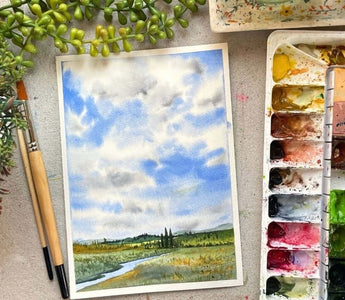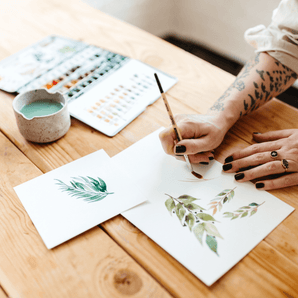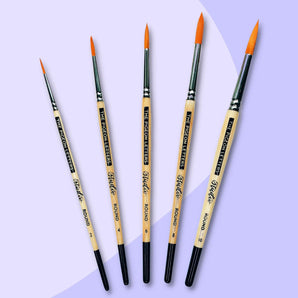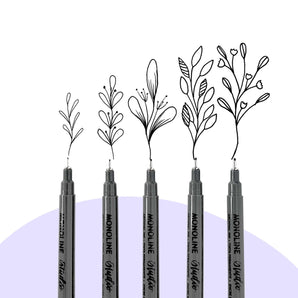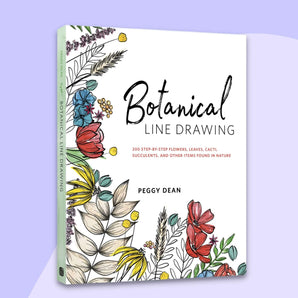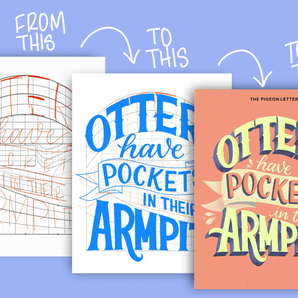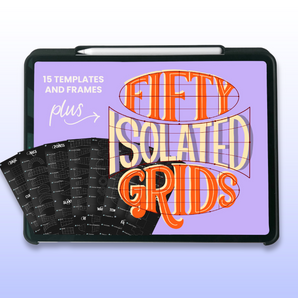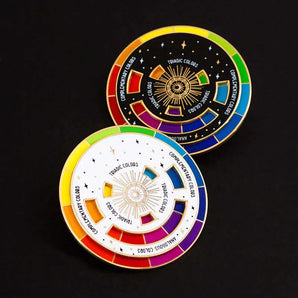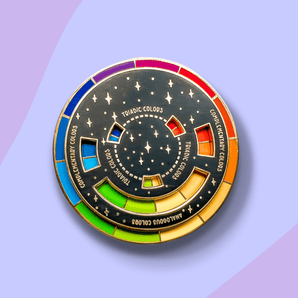Today we will be learning how to paint a simple summer landscape using watercolor. This will be an easy step by step guide on how to paint a landscape using a limited palette. Along the way we will be learning different watercolor techniques which later you can use for any painting.
Hello everyone! I am Shreya from India and this year I am part of the Pigeon Letters’ Design Team. I absolutely enjoy sharing my love and knowledge for watercolors with you. Seeing you all paint and learn along with me makes me so happy. So let's not waste any time and get started.
Supplies:
- 8” by 5.5” watercolor paper
- Watercolor brushes: size 14 and one liner brush
- Watercolors (ultramarine blue, Indigo, sap green, may green, naple yellow, yellow ocher, payne's gray)
- White paint
- 2 jars of water
- Rough cloth/tissue
- Palette to mix all your colors
- Pencil, eraser and masking tape

Grab yourself a pack (or two) of the leading cruelty-free paintbrushes in the bizz.
You absolutely don't need the exact same shades and supplies, use whatever materials you have. Let me list the alternative colors as well as share with you the recipe on how to mix that particular shade down below for you.
Ultramarine blue: instead of this color, you can use bright blue, cobalt blue, cerulean blue .
May green: this color can be easily mixed by mixing lemon yellow with sap green.
Other greens: you can mix multiple greens by just mixing yellow and blue in different proportions. So definitely try mixing your blues and yellow together to see what shades of green you get.
Paynes grey: you can use black instead of this color.
Want to watch the painting process instead?
Step 1: Sketch Your Landscape Composition

As we majorly want to focus on the sky, we will leave ⅔ of the paper for the sky and the rest of the bottom area will be for the land.
Apply masking tape on all sides of your paper and thoroughly press it down so that there is no gap between the paper and the masking tape.
Once masking tape is applied, start lightly sketching small mountains from the bottom of your page. Between those mountains, draw a small river stream.
Step 2: Prepare Colors and Wet the Paper

As we will be painting the sky using a wet-on-wet watercolor technique, it is advisable to first prepare the colors for the sky so that you don't waste time while painting. So for the shadows in the clouds, mix 50% of Paynes gray with 50% either white gouache or white watercolor. For the sky, mix 80% of ultramarine with 20% white. Adding white will help the color to spread a little less on the paper, thus making it easy for you to control paint and water on paper while using the wet-on-wet technique.
Once our colors are ready, start wetting the sky area. . You see the shine on the paper? That's how wet your paper should be.
Step 3: Paint the Cloud's Shadow
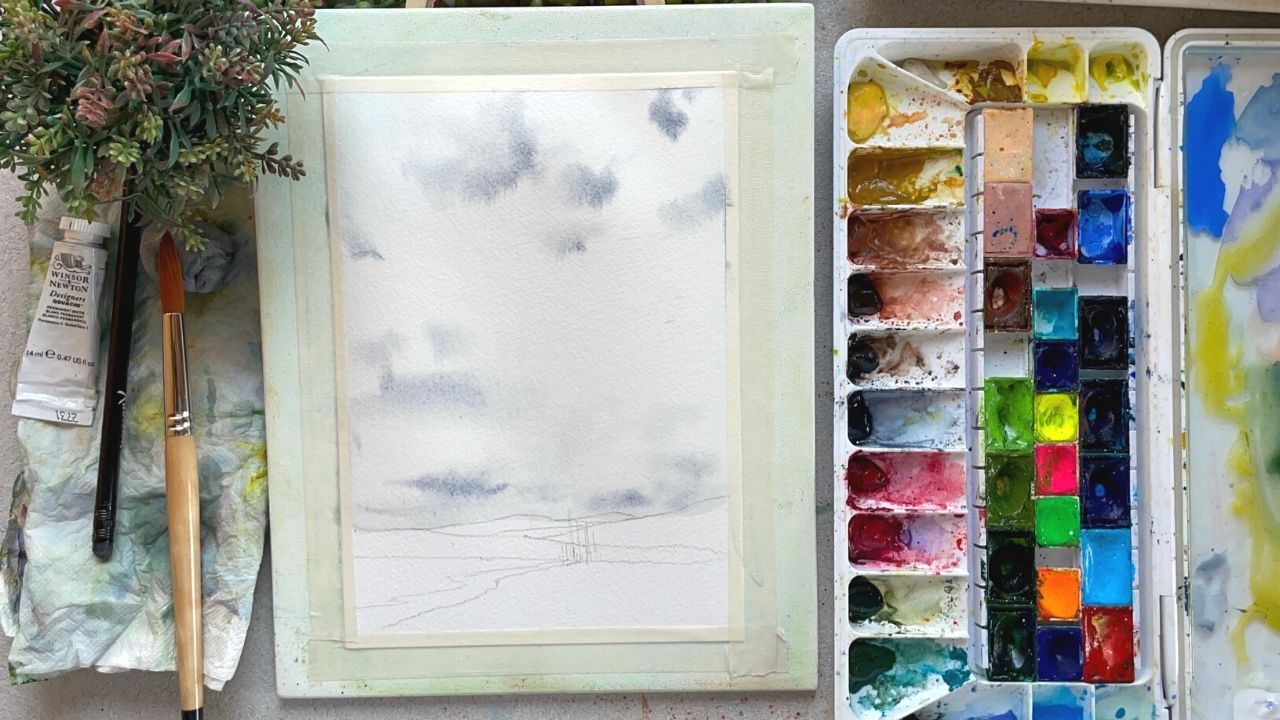
Before you start applying the colors, tilt your paper at a 30 degree angle by just placing masking tape or any object below. This will help the colors and water to flow downward. If you see excess water flowing down, just grab a tissue and lift off the extra water. Then start applying the gray color that we mixed earlier on the wet paper, leaving the gaps in between.
Step 4: Paint the Sky and Water Stream

Once we have painted the shadow of the clouds, we will start painting the sky. Grab the blue color which we mixed earlier and start applying that color on the wet paper, leaving white gaps near the shadows you painted. Once you start applying the blue color, you will see clouds and sky come to life and everything will make sense now. Later, use the same color but dilute it a little by adding water and paint the water stream.
Tips
- Use a thick consistency of blue paint so it spreads a little less.
- You can always use clean tissue to lift off the blue paint in case you feel there is not enough white on the sky
- - or - you can always use a damp brush to lift off the paint too
Step 5: Paint the Background Mountains

Start painting all the layers of the mountains as well as the foreground with different shades of green. Use water and a little bit of yellow ochre to make greens lighter, and the same way, use indigo to make it a little darker. Let each layer dry before you paint the adjacent mountain. Otherwise, the colors will flow into each other. Use dark dull colors to paint the mountains which are at the very end and as you come forward, use bright greens, as that's where sunlight is hitting the ground.
Step 6: Add Foreground Details

Now take a liner brush or small size 1 brush and start adding tiny little grasses, bushes and trees. Use different shades of greens to do that. This will sure take a little bit of time and patience but the end result will be phenomenal so don't hurry this step.
Step 7: Add Splatters for Interest

Before you add splatters, cover the sky area with paper or tissue. Then we want the splatters to be small so we will use a smaller brush to do that. So first load your brush with paint and then either use your hands or other brush and start taping on the brush with paint. You will see drops on paint fall on the paper. So repeat this step with each color, i.e. sap green, yellow ochre and naples yellow.
Step 8: Remove the Masking Tape

And we are done! Now let everything dry completely. Once it has dried, remove the masking tape at an angle, which is away from the paper so that you don't end up tearing it. And ta-da we are done painting a beautiful summer day landscape painting using watercolors.
Thank you so much for painting along with me. I hope you enjoyed learning. Now it's your turn to paint and have some fun. If you happen to share do tag me I would love to see your amazing work. Until next time!
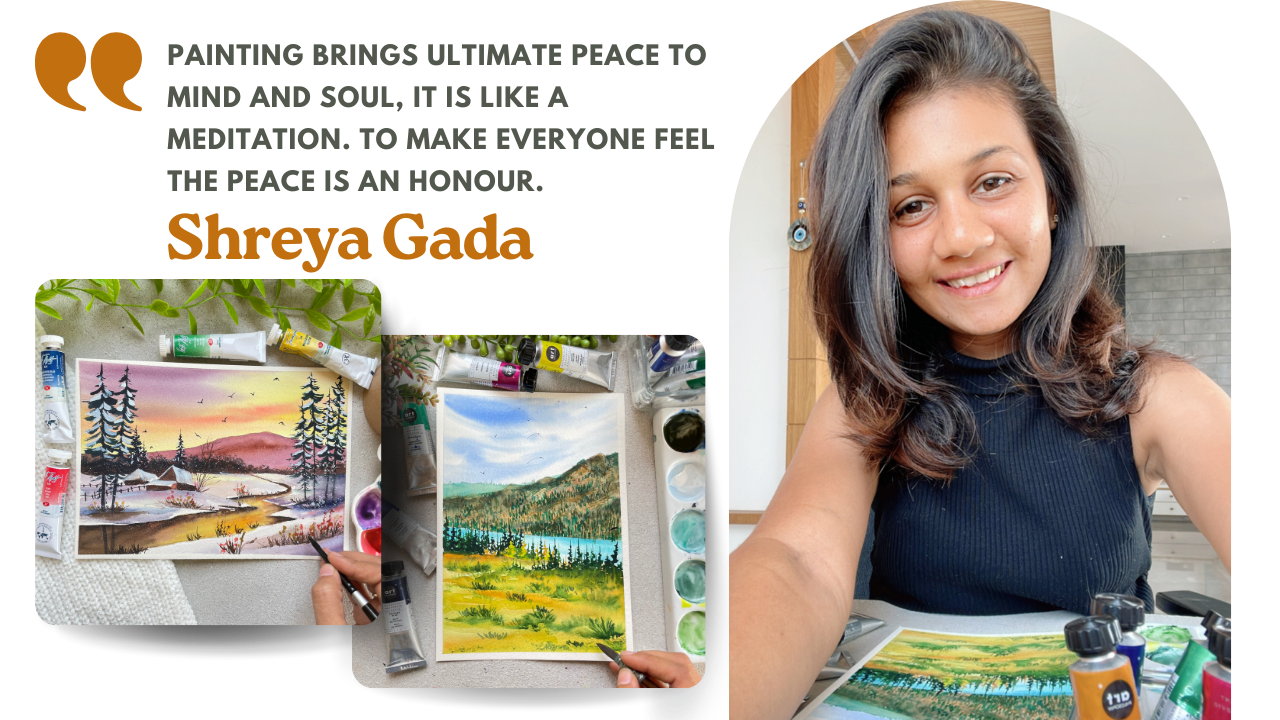
See all of Shreya’s tutorials on the blog!
Shreya is a full time artist, Art Educator, Youtuber and Skillshare teacher from India who works with various mediums. Her go-to medium is the free flowing, unsecured nature of watercolors. Nature is her biggest inspiration and the sole reason she loves painting landscapes, seascapes, florals, the night sky and Northern Lights, and so much more. She finds peace in painting and her ultimate goal is to make everyone feel the same through her work and through her teachings.

